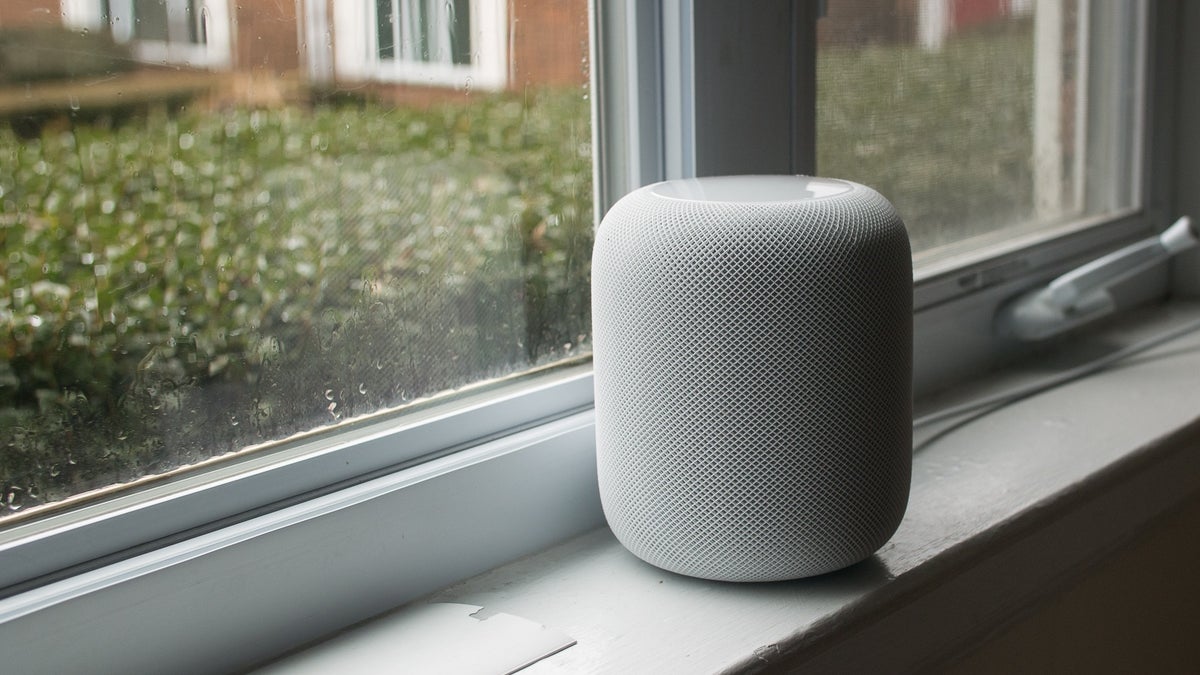Patent suggests Apple HomePod with Face ID and 3D hand gestures could happen... someday

Apple’s first (and so far only) smart speaker is certainly not selling as well as Amazon’s extensive Echo lineup or the ever-growing (and growingly popular) Google Home product roster.
But the HomePod is probably not going anywhere, as evidenced by a corporate acquisition from a few months back that’s likely connected to the future development of Apple’s AI-powered technologies.
While it remains unclear if a sequel is around the corner, a recently published patent application includes some very intriguing information about Apple’s conceptual plans for the long-term evolution of an unnamed electronic device comprising “cylindrical housing structures” and a speaker mounted in said “structures” with fabric on top of it.
While it remains unclear if a sequel is around the corner, a recently published patent application includes some very intriguing information about Apple’s conceptual plans for the long-term evolution of an unnamed electronic device comprising “cylindrical housing structures” and a speaker mounted in said “structures” with fabric on top of it.
No prizes for guessing what that product might be, but its description sure takes a turn for the futuristic with the addition of a “sensor that detects three-dimensional hand gestures”, “light-emitting diodes that are configured to display alphanumeric characters through the fabric”, and “additional light-emitting diodes that are configured to provide visual feedback that the three-dimensional hand gestures have been detected by the sensor.”
Furthermore, the patent imagines facial recognition technology integrated into the HomePod... someday, performing “image processing operations on images captured with cameras” or measuring the distance at which a user is located through various methods, including “time-of-flight.”
In a nutshell, Apple appears to have considered at one point the possibility of equipping a smart speaker with ultra-advanced Face ID functionality and 3D hand gesture detecting capabilities.
That sounds absolutely insane, not to mention incredibly expensive, but it’s important to remember far-fetched ideas like these are often patented and theoretically envisioned just in case. In case the technology ever gets to that point where we need every single device in our home to be able to scan our face for an added layer of security. Or in case we randomly decide gestures are a more convenient way to control smart speakers than voice.
Another concept detailed in this patent documentation, which was actually filed all the way back in October 2017, is the integration of voice recognition technology that could basically detect the mood of the future HomePod user.
If “vocal stress” would be identified, “adjustments to content being presented to the user” would attempt to calm HomePod owners by creating a “calming environment” with the help of lighting patterns or soothing colors. Next step - filing a patent application to replicate the movie “Her” in real life.
Follow us on Google News














Things that are NOT allowed:
To help keep our community safe and free from spam, we apply temporary limits to newly created accounts: